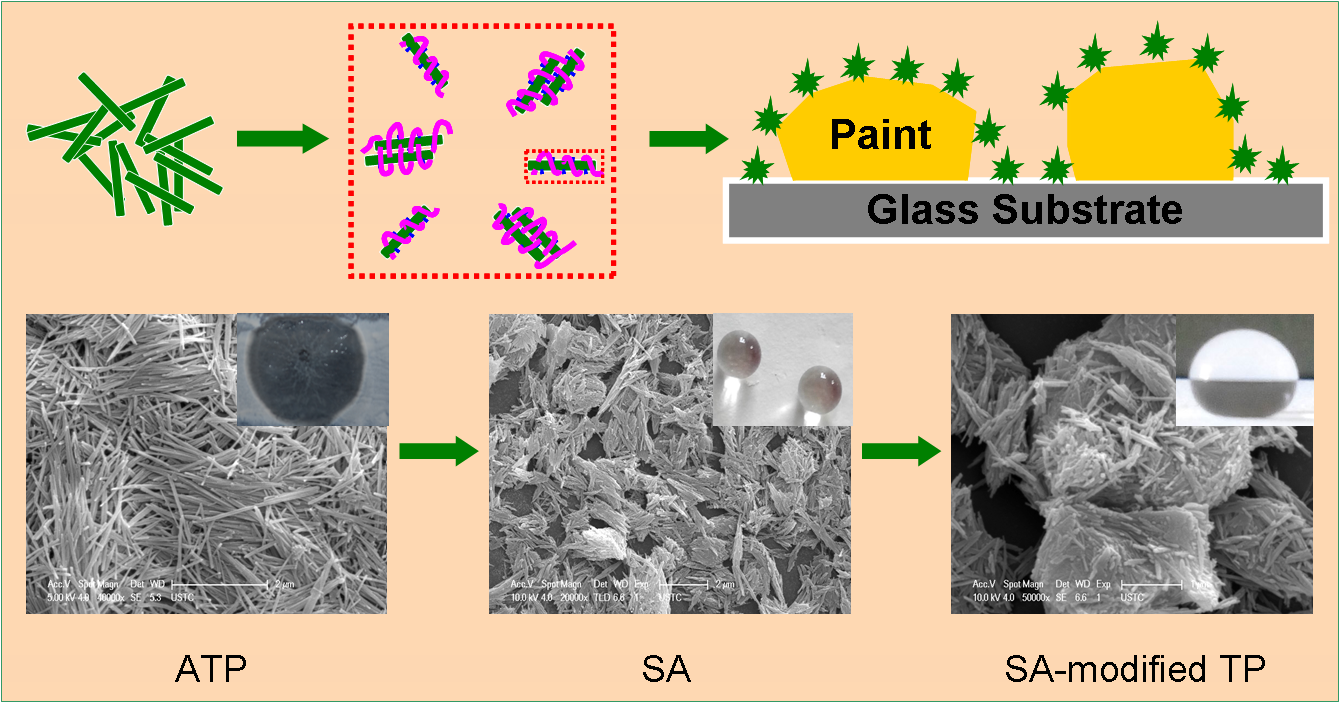
A study team led by WU Zhengyan in Institute of Technical Biology and Agriculture Engineering, Hefei Institutes of Physical Science, Chinese Academy of Sciences, announced they managed to modify nanoclay by polymers with low surface free energy.
Most of the traditional paints (TPs) are hydrophilic and thus tend to be contaminated by pollutants, of which the cleaning needs manpower and is expensive. Therefore, it is important to develop a kind of novel paint with high hydrophobicity and self-cleaning ability.
However, most of the existing approaches display complicated procedures and high costs, which make barriers to their large-scale applications.
"We managed to develop a facile and low-cost method to fabricate super-hydrophobic paint suitable for practical applications", said WU Zhengyan.
To solve the problem, WU's team developed a self-cleaning paint by adding palygorskite (Pal) modified by amino silicon oil (ASO) and aminopropyltriethoxysilane (APTES) to TP.
Therein, ASO and APTES could effectively make a Pal form with plenty of nano-clusters, and significantly increase the roughness and amount of hydrophobic groups on the surface of Pal.
The hydrophilic nanoclay apparently converted to super-hydrophobic material after modification with polymers due to the decreased amount of hydroxyl groups on nanoclay surface.
And the resulting hydrophobic nanoclay could be used as a high-performance agent to fabricate a super-hydrophobic paint. Compared with TP, this modified paint shows high self-cleaning properties.
This work provides a low cost and facile approach to fabricate super-hydrophobic agent and self-cleaning paint.
This work was published in Applied Clay Science with the title of "A facile approach to fabricate self-cleaning paint".

Schematic diagram of the fabrication process and the mechanism of super-hydrophobic agent and paint. (Image By ZHOU Linglin)

86-10-68597521 (day)
86-10-68597289 (night)

86-10-68511095 (day)
86-10-68512458 (night)

cas_en@cas.cn

52 Sanlihe Rd., Xicheng District,
Beijing, China (100864)

